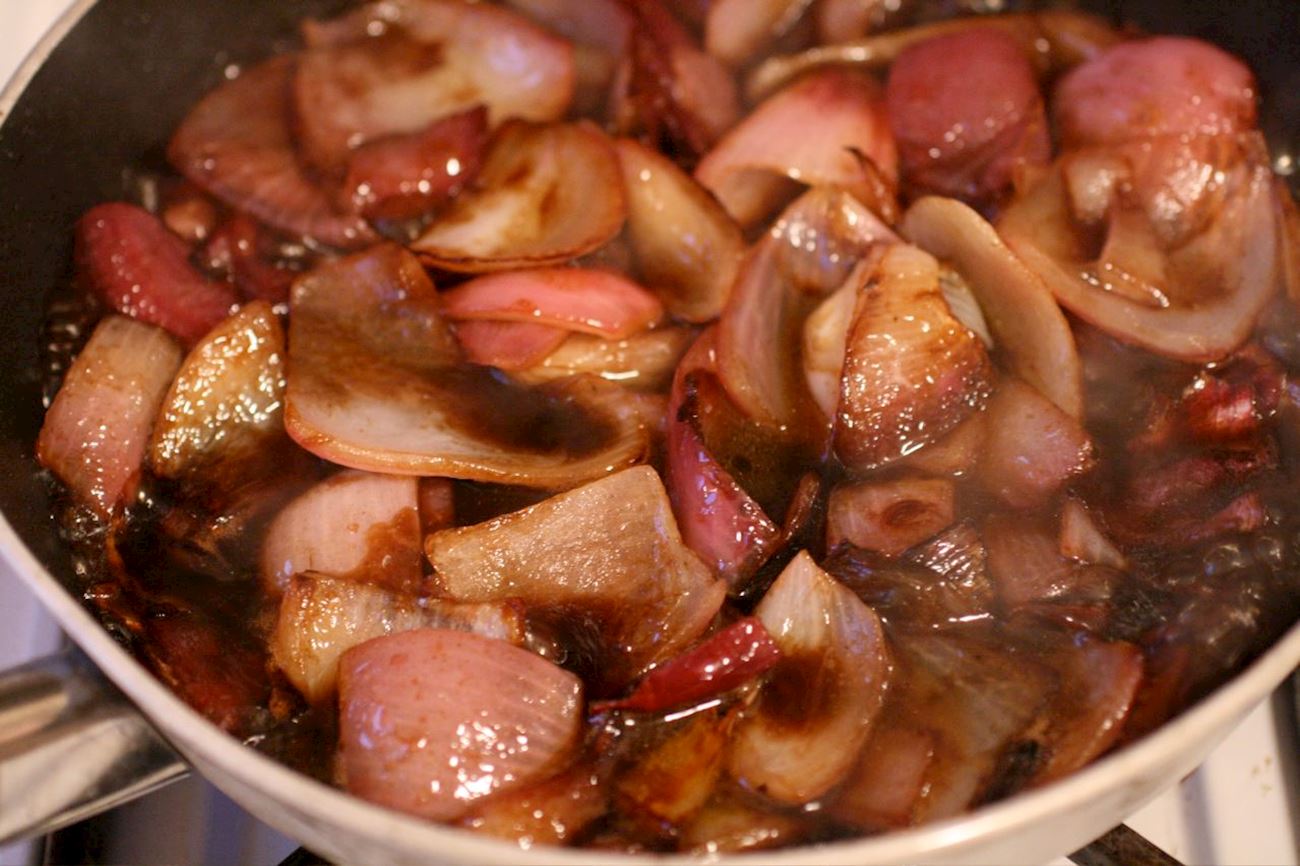The Piedmontese bagna càuda, also spelled bagna caôda (lit. hot bath), is a dip made with garlic, anchovies, and olive oil, typically served with the so-called pinzimonio di verdure, an assortment of raw, boiled, or roasted vegetables; most often fennel, artichokes, peppers, and carrots, but some recipes suggest even cauliflower, celery, onions, and cucumber.
This fragrant Italian dip is sometimes made with the addition of milk, cream, butter, or walnut oil, and it’s traditionally prepared during autumn and winter months, particularly around Christmas and New Year's. In Piedmont, bagna càuda used to be dished out in peila, a big pan placed at the center of the table for communal sharing, while today it's been spruced up and comes served in fojòt, a type of an individual fondue pot made of terra cotta.
Agrodolce is a traditional sauce characterized by its sweet and sour flavor coming from a combination of vinegar and sugar with the addition of wine (and sometimes, onions, fruit juice, or chocolate). The name agrodolce is a combination of two words - agro, meaning sour, and dolce, meaning sweet.
The traditional version is a thin sauce that is similar to the French gastrique, although the modern version can be chunky and similar to a relish. It is believed that agrodolce has Sicilian origins with strong Arabian influences. The sauce is typically used in numerous pasta dishes or as a topping for grilled meats.
Serve with
Friggione (also known as frizòn) is an onion and tomato dip, a traditional peasant dish originating from the farming villages around Bologna. It is prepared by macerating thinly sliced white onions in salt and sugar and then slowly cooking them in lard with the addition of chopped fresh tomatoes.
Nowadays, the lard in recipes is often replaced with extra-virgin olive oil, but the onions remain an undisputed star of this dish: not any sort will do, and as the onions need to be sweet and delicate, the perfect choice is a famous local onion variety called medicina.
MOST ICONIC Friggione
View moreTasteAtlas food rankings are based on the ratings of the TasteAtlas audience, with a series of mechanisms that recognize real users and that ignore bot, nationalist or local patriotic ratings, and give additional value to the ratings of users that the system recognizes as knowledgeable. TasteAtlas Rankings should not be seen as the final global conclusion about food. Their purpose is to promote excellent local foods, instill pride in traditional dishes, and arouse curiosity about dishes you haven’t tried.





